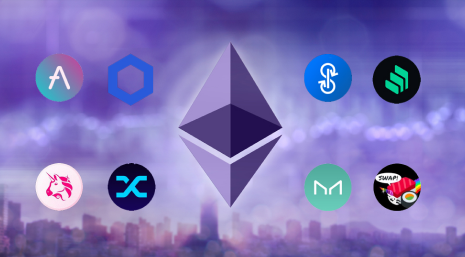share
In the crypto space, something regularly appears that is gaining popularity very sharply. It becomes “fashionable,” instantly grows, and then just as quickly deflates.
Sometime in 2017, there was an ICO boom. Then it was time for an IEO (initial exchange offer). Since 2020, everyone has been talking about products from the field of DeFi, such as Yield Farming.
What Is Yield Farming?
Yield farming is the process of finding and gaining maximum profitability using several DeFi platforms. These are strategies for placing cryptocurrencies in the most profitable smart contract of DeFi applications and then transferring the received tokens to other smart contracts. This allows you to get a multiplicative effect from the investment.

The Way Yield Farming Operates
Yield farming is based on a system of traditional deposits in banks that bring interest; the difference is that DeFi Yield Farming includes interest generated by secured assets and, mainly, stable coins.
Any investor or trader who wants to grow crops should turn to DeFi platforms such as Compound, Aave, or Tether. These platforms collect crypto assets from cryptocurrency investors, transfer them to borrowers, and then pay interest on the loan to investors.

The interest received from lending cryptocurrencies can be fixed or variable. Interest rates are set by platforms and therefore vary. Most crop cultivation DeFi protocols now reward liquidity providers with management tokens, which can usually be sold both on centralized exchanges such as Binance and on decentralized exchanges – Uniswap. For example, Compound rewards its users, both the crypto lender and the borrower, with its “Comp” token. But DeFi platforms also set conditions for a crypto lender or borrower to enter into a transaction. So, the borrower, in order to borrow part of the funds from the platform, must deposit double the loan amount as collateral.
The systems use the functionality of smart contracts to control the cost of collateral at any given time. If it is less than the loan amount, the smart contract automatically liquidates the borrower’s account, and the interest is immediately returned to the lender from smart contracts. Thus, in case of non-payment of funds by the borrower, the lender does not remain at a loss (impermanent loss).
How to Grow “Crops”?
The first step in crypto yield farming involves adding crypto assets to liquidity pools, which are essentially smart contracts containing funds. These liquidity pools provide a marketplace where users can exchange, borrow or borrow tokens. Once you have added your funds to the liquidity pools, you have officially become a liquidity provider.

In exchange for storing funds in the liquidity pools, suppliers receive remuneration in the form of a commission generated by the underlying DeFi platform. Some cryptocurrencies are more widely accepted than others, and not all digital assets bring high returns. Reward tokens can also be placed in liquidity pools, and this is a common practice when people move their funds between different protocols in pursuit of higher returns.
Yield farmers use very complex strategies, and they keep the most profitable ones secret. The more people know about the strategy, the less effective it will work. This is by no means easy and certainly not easy money. Liquidity providers receive remuneration proportional to the amount of liquidity provided, so those who receive huge incomes have huge capital behind them, respectively.
The Popularity of Yield Farming
Experts associate the boom in agricultural yields with the beginning of the so-called COMP token. ERC-20 helps to resolve protocol management issues and choose development directions. The owners of management tokens have the right to vote. That is, the protocol is managed by the owners of these tokens. The question is how to make the Yield farms decentralized? The most popular and practical way is the algorithmic distribution of such tokens, including incentives for liquidity. This method of decentralization is very attractive for market makers. It motivates them to create new tokens and provide liquidity. Since the launch of COMP, many different DeFi platforms have offered completely new schemes for attracting liquidity to the ecosystem of growing crops.
The use of the Ethereum blockchain is the most well-known when it comes to yield farming. The decentralized financial space is currently valued at more than $121.5 billion (total value locked). Previously, the ETH blockchain suffered from certain scalability problems. That’s why some experts, such as Ethereum’s” father,” have argued that he won’t sink his feet into yield farming until it stabilizes.

Crop farm token holders can use coins in many different ways. Tokens, as a rule, mean owning something like a part of a certain liquidity pool or access to a service. For example, if we take the Brave browser, ads can be bought simply by utilizing the basic Attention Marker (BAT). Sometimes you can use these tokens as funds in a suite of applications. Online users can spend coins with each other in fairly small amounts.
As the experts from Forbes rightly admit, all you need to benefit from developing yield farming is the right time and the right basic tool.
Important Information
You should estimate this indicator every year using the agricultural yield calculator. It will show the refunds that you can receive for the specified period of time. Usually, two options, APY and APR, are enough, but some utilize another metric, which is a fixed total cost. So, here’s how to calculate the return for LP.
- TVL(total value locked) is an indicator of how many cryptocurrencies are blocked on credit and other financial markets. This indicator is useful for assessing the state of the ecosystem of productive agriculture. The “golden rule” is as follows: the more the total value locked, the more yield can be. Use US dollars, ETH, or BTC to evaluate this indicator.
- APR is the amount of interest you pay annually. APR ignores the effect of aggravation.
- The APY is the actual rate of return that you earn on the invested amounts. In this case, the aggregate interest matters.
These calculations will never be 100% accurate. This is due to the fact that DeFi yield farming is a fairly competitive and rapidly developing market.
Keep in mind that agriculture yield farming is not immune from capital losses (impermanent loss). A farm transaction involves virtual transaction protocols between a pair of anonymous parties without a central executive authority. If any system error occurs, financial information may be lost.
Yield Farming Platforms and Protocols
Compound Finance
The same network sets the trend for DeFi Yield farming. Any user with an Ethereum wallet can act as a liquidity provider on Compound and receive rewards.

MakerDAO
MakerDAO is a credit platform on which users lock their crypto assets, for example, ETH, BAT, USDC, or WBTC, as collateral. A DAI is created in a decentralized manner – a stable coin tied to the US dollar. You can use Maker to get DAI, which can then be used in DeFi Yield farming strategies.

Synthetix
Synthetix is an Ethereum-based protocol for the release of synthetic assets. Synthetix assets are financial instruments in the form of an ERC-20 smart contract, known as “Synths,” that track and ensure the profitability of another asset without requiring you to hold that asset.

Aave
Aave is a popular decentralized protocol for crediting and borrowing tokens. Interest rates are regulated algorithmically depending on the state of the market. The deposited tokens immediately begin to earn interest. Another Aave feature is instant loans, which allow users to borrow any amount of capital, provided that it is returned within the same transaction – this helps to use the arbitrage opportunities.

Uniswap
Uniswap is a decentralized exchange (DEX) that allows the exchange of tokens “without trust.” To create a market, liquidity providers contribute the equivalent value of two tokens, after which traders can trade against this liquidity pool. In exchange for liquidity, providers receive a commission from transactions taking place in their pool.

Curve Finance
Curve.Finance is mainly used to exchange stable coins with low trading fees. Stablecoins are one of the most flexible and profitable assets a farmer can have, which is why Curve.Finance is a fairly popular crop growing network.

Balancer
On Balancer, liquidity providers can create customized liquidity pools instead of complying with the allocation ratios set on many other platforms. The flexibility of the Balancer has made it popular with Yield farmers.

Yearn.finance
Yearn.finance is a decentralized DeFi ecosystem of aggregators for credit services such as Aave, Compound, and others. The service is aimed at optimizing token lending by algorithmically searching for the most profitable lending services. When making a deposit, funds are converted into Ytokens, which are periodically rebalanced to maximize profits. Yearn.finance is useful for Yield farmers who need a protocol that automatically selects the most suitable strategies for them.

The Risks of Yield Farming
Of course, this is extremely risky, but you should never invest in something that you cannot afford to lose (impermanent loss). Many projects for DeFi Yield farming are short-lived and do not have stability. Ethereum developers also say this. These DeFi Yield farming projects collect huge sums in a short period of time and then close or have an impermanent loss. Often it turns out to be scammers.

But experts predict that DeFi Yield farming platforms like the ones listed above will exist for a long time. It may not be possible to earn as much money on them in the coming years as it is now (somebody can have an impermanent loss), but the world of loans will definitely change.
“It is difficult to judge all DeFi applications, this is a young field, and it is now at the very beginning of its development. But in general, this is not a fraudulent scheme, but a new approach to generating value in the financial market,” says the official representative of the Garantex cryptocurrency exchange, Tatiana Maksimenko.
It is almost impossible to accurately predict the future in such a volatile space. The current level of hype and expectations can potentially cause network congestion. Price fluctuations may lead to the fact that some Yield farmers will not be able to liquidate their assets, which will negatively affect the overall confidence in Yield Farming.
At the moment, DeFi Yield farming remains a high-risk and high-return practice that is worth doing if the necessary research and risk assessment have been carried out in advance.






